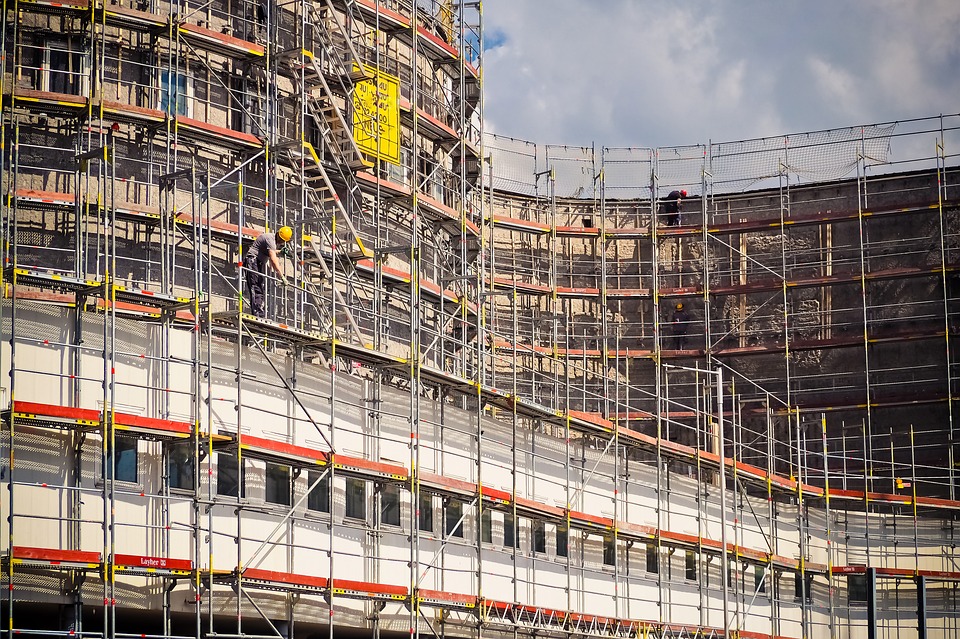How to check the quality of construction?
Read latest blogs and articles from Housystan

The Information mentioned here was last updated on:
20/1/2026A Layman's Guide to Checking the Quality of Construction
Ensuring the quality of construction is crucial whether you're building a new house, buying a property, or investing in real estate. Understanding how to check the quality can save you time, money, and stress down the road. Let's explore the key areas to focus on and how to approach each one with confidence.
Foundation and Structure
- Verified Tenants/Buyers
- Unlimited Property Listing
- Zero subscription/charges fee
Importance of a Strong Foundation
The foundation is the backbone of any structure, quite literally. A solid foundation ensures that the building stands the test of time. It's essential to assess whether the foundation is well laid, stable, and free from cracks. One of the simplest ways to check this is by using an inspection mirror to check for visible signs of wear and tear.
Walls and Roofing
The walls should be straight and even, with no signs of water leakage or mold. Ensuring that the walls are non-porous and well-sealed is crucial, especially in areas prone to heavy rain. When it comes to roofing, look for any missing tiles, holes, or signs of damage. A professional can help to check if the roof has a slight pitch to aid water drainage.
Materials Used
Quality Over Quantity
The quality of materials used in construction is a significant determinant of the overall sturdiness and durability of a building. For instance, checking the quality of cement, bricks, and steel can make a big difference. Ask for the grade of cement used — higher grades indicate better strength and longevity. Similarly, ensure that the steel used is corrosion-resistant.
Eco-Friendly Options
In recent times, environmentally-friendly materials have become increasingly popular. Materials like bamboo, recycled steel, and insulated concrete forms are good for the environment and offer lasting durability. If sustainability is important to you, this is an aspect to consider and discuss with your contractor.
Finishing and Aesthetics
Paint and Plastering
The paint used should be of high quality to ensure it doesn't chip or fade quickly. Check for evenness and consistency throughout the walls — any bubbling or uneven patches are red flags. Plaster should be smooth without cracks, and it should cover the entire surface uniformly.
Flooring
Flooring not only affects the aesthetics of your space but also its functionality. Whether it's tiles, hardwood, or laminate, ensure the flooring is installed correctly and finished well. Keep an eye for any uneven surfaces or loose tiles, which can be hazardous. Inspecting the grout lines between tiles will give you an idea of the precision and attention to detail in the construction.
Plumbing and Electrical Systems
Functional and Efficient Plumbing
A robust plumbing system prevents leaks, water wastage, and other moisture-related issues. Ensure all pipes are corrosion-resistant, and check for leaks in both visible and hidden areas. Turn on faucets to check water pressure and examine the drainage for any blockages.
Safe Electrical Installations
Faulty electrical systems can pose significant safety risks. Inspect electrical panels to ensure they are well-organized and wires are labeled. Test all switches and outlets to ensure they are functioning properly. If possible, hire an electrician to inspect for any potential hazards.
Doors and Windows
Security and Insulation
Doors should fit snugly within frames and offer robust locking mechanisms without difficulty. Windows should be easy to open and close and provide adequate insulation against temperature changes and outside noise. Check for any drafts or gaps around the frames that could lead to energy inefficiency.
Material and Durability
Both doors and windows should be made of durable materials that withstand daily wear and tear. Wooden fixtures should be treated against termites and water damage, while metal ones should be rust-proof.
Safety Measures
Fire Safety
Look for adequate fire safety measures, such as smoke alarms, sprinkler systems, and fire extinguishers. Buildings should have clearly marked fire exits that are unobstructed and easily accessible.
Structural Safety
In earthquake-prone areas, ensure the building complies with local seismic codes. Reinforced frames and shock-absorbing materials can make a significant difference in the event of a natural disaster.
Regulatory Compliance
Building Codes and Zoning Laws
Ensure that the construction is in compliance with local building codes and zoning laws. This includes aspects related to structural integrity, safety, and environmental impact. A certified building inspector can verify if the construction meets all the required standards.
Certification and Documentation
Make sure all necessary certifications, including occupancy certificates, environmental clearances, and any other regulatory documentation, are in place. These documents provide proof that the building meets legal requirements and standards.
Professional Assessments
Hiring Experts
Sometimes the best way to ensure the quality of construction is to bring in professionals who specialize in inspections. Structural engineers, home inspectors, and other specialists can offer insights that may not be apparent to the untrained eye. They can recognize subtle signs of potential problems, saving time and money in the long run.
Periodic Inspections
Even after initial construction, regular inspections are valuable. They help track wear and tear and maintain a sound structure. Addressing minor issues promptly can prevent them from becoming major concerns.
Conclusion
Checking construction quality may seem overwhelming at first, but it's an essential step for anyone involved in building or buying property. By focusing on key areas such as foundations, materials, finishes, and systems, you can ensure that you are making a sound investment. Keep a checklist handy to guide you through the process, and never hesitate to employ professionals to lend their expertise.